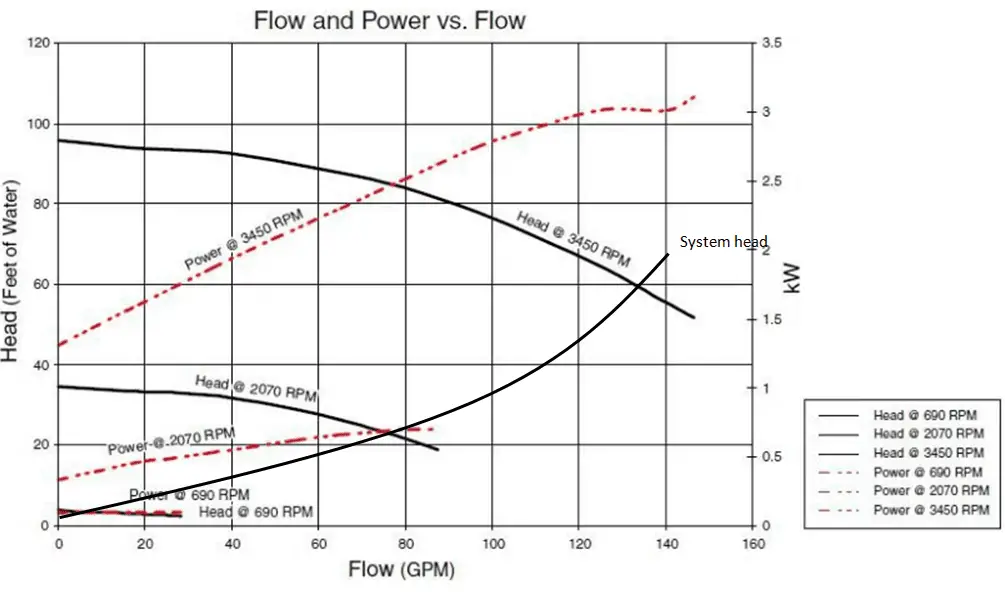Performance Characteristics of Centrifugal Pumps
Although the theory of centrifugal pumps gives many qualitative results, the most important indicator of a pump’s performance lies in extensive hydraulic testing.
In industry, characteristics of all pumps are usually read from its Q-H curve or performance curve (flow rate – height). As can be seen, the performance charts use a discharge – Q (usually in m3/h) and pump head – H (usually in m) as basic performance variables.
Runout Flow
 Pump runout, or runout flow, is the maximum flow rate that a pump can develop. The runout conditions correspond to a very small pump head, while the flow rate is maximal.
Pump runout, or runout flow, is the maximum flow rate that a pump can develop. The runout conditions correspond to a very small pump head, while the flow rate is maximal.
The performance curve (published by the pump manufacturer) is typically cut off at some point beyond the pump’s allowable operating range (AOR). The point at which the performance curve ends is referred to as runout. Decreasing pressure to and below the runout point may overload the pump motor, vibrating and overheating. Therefore the operation beyond this point should be avoided.
